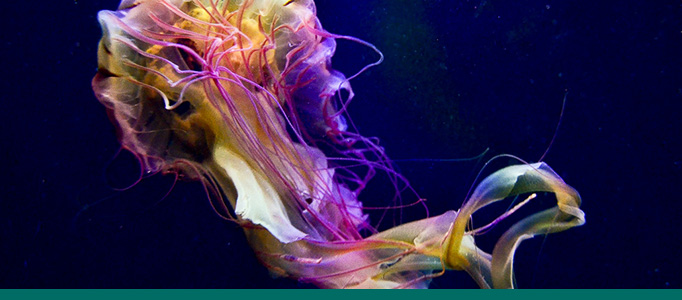Jellies: Aliens from the Sea

Primitive animals with no bones, no heart, no blood, no gills and no brain, jellyfishes have drifted through Earth's oceans for hundreds of millions of years.
These delicate-looking predators are named for the jellylike substance, called mesoglea, that forms their tissues.
Jellies are not fish. Having a soft body with no backbone, they are classed as invertebrates. Jellies feed on small drifting animals, larvae and eggs and are eaten by some sea turtles, fishes, snails and humans.
Jelly Life
A jelly is mostly water — more than 95 percent. The adult form, called a medusa, has a bell-shaped body.
Medusae move about by contracting muscles along the lower edge of the bell and propelling themselves forward. They feed by stunning or paralyzing prey with stinging cells, called nematocysts, located on their feeding tentacles. Once the prey is immobilized, the tentacles move it to the opening of the central cavity for digestion.
The single opening in the jelly's body cavity is used for feeding and waste disposal.
